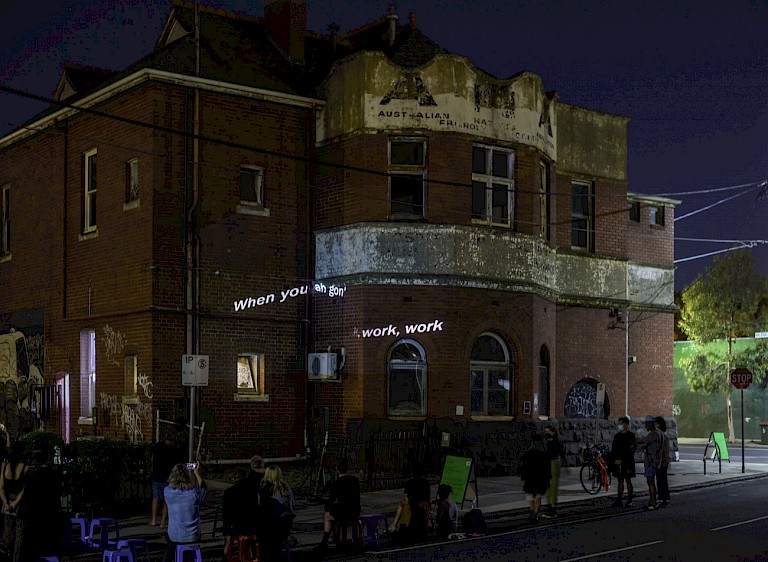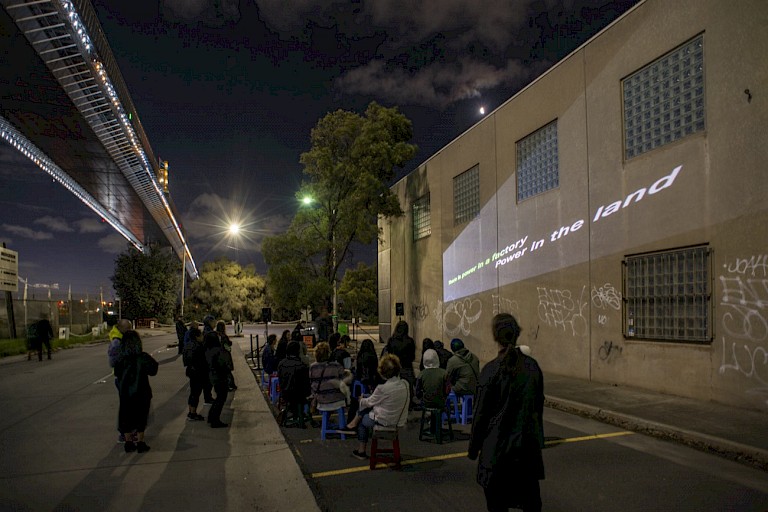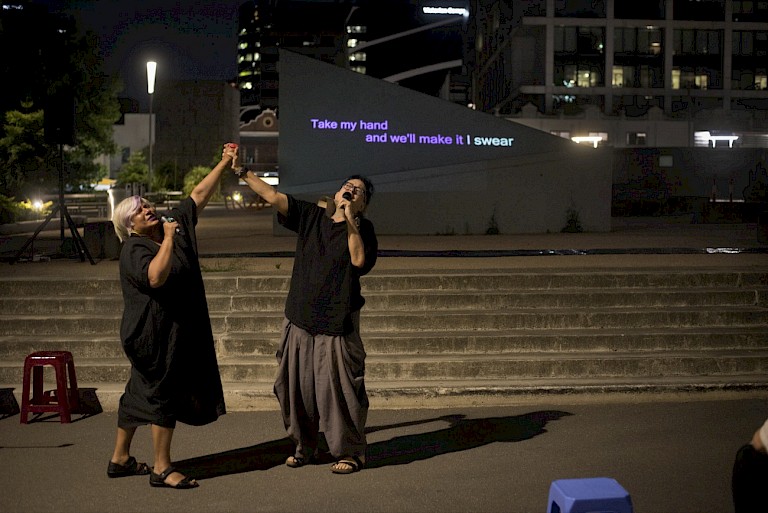



The Artist
Hoang Tran Nguyen was born in Vung Tau, Vietnam and now lives and works in Naarm–Melbourne, Australia. He is a multi-disciplinary artist working in social practice / socially engaged art to address overlapping cultural histories, politics of place and the role of the art-worker. Nguyen’s work has featured in self-initiated projects (Bilo Artspace, fauxPho), arts festivals (Due West, Big West, Next Wave) and galleries (Australian Centre for Contemporary Art, Buxton Contemporary, The Substation). Nguyen is currently a PhD candidate at the Victorian College of the Arts (University of Melbourne).
Hoang Tran Nguyen’s piece Work, Worker was part of the wider Who’s Afraid of Public Space? project. Who’s Afraid of Public Space? was curated by Max Delany, Miriam Kelly, and Annika Kristensen and programmed through a collective curatorial process, developed in collaboration with a curatorial advisory group comprising Dr Marnie Badham, E. Flynn, Eugenia Lim, Dr Grace McQuilten, Dr Timothy Moore, Professor Nikos Papastergiadis, Nur Shkembi, and Jarra Karalinar Steel. Who’s Afraid of Public Space? was a multifaceted project of exhibitions and offsite programs exploring the role of public culture, the contested nature of public space, and the character and composition of public life. Presented over a two-year period, culminating in a major onsite exhibition at ACCA through the summer of 2021–22, the project extended across the city of Naarm-Melbourne. The concept for Who’s Afraid of Public Space? was initiated through multiple conversations about global art and cultural practices that engaged with ideas of public space, raising questions of what constitutes public space and public culture, as well as who might public space be for? The title of the project was drawn from an essay by academic Dr Grace McQuilten, in which she sought to consider what role art and cultural practice could play in countering the psycho-social impacts of an increasing presence of violence and fear in Melbourne’s public spaces. Funding came largely from the wider budget, which included both a core investment from ACCA, as well as the support and collaboration of a wide range of project partners and supporters from the philanthropic, academic, media and other communities. Hoang’s project also benefitted from the in-kind support of the businesses and custodians of the spaces in which it was presented including Mama Chen’s restaurant and the University of Melbourne.ACCA initially approached the artist for a studio visit in early 2021. In discussing Nguyen’s work and interests, and learning of ACCA’s development of Who’s Afraid of Public Space? curatorial project the artist suggested two projects, one consisting of a reworking of an earlier project Labour from 2013, the other his work in social practice looking at language education in the context of Australia’s institutional monolingualism and his involvement in the language advocacy group ViệtSpeak: https://vietbilingual.org/ ACCA expressed interest in re-staging Labour in the contemporary context and commissioned Nguyen to develop the events for three sites across Naarm Melbourne. The project was informed by a collaborative curatorial team, encompassing curatorial staff members at ACCA, alongside guest curators from the artistic, academic and First Nations communities. The project was managed by ACCA’s curatorial and public programs teams. The artist gravitated to sites that told aspects of the social politics that shape Melbourne and sites that allow the project to consider certain public cultures of work, including West Gate Bridge. This site is a reminder of how the meaning of public spaces can be unstable, brought into contention, and adopted by communities to express social and political dissatisfaction. Known for the tragic loss of workers’ lives during its construction the bridge was recently as a backdrop for riots in the pandemic era against COVID-related government mandates.
Hoang Tran Nguyen participatory project Work, Worker was a clever extension and adaptation of a previous body of the artist’s work titled Labour, originally staged in 2013. It explores notions around labour including during a pandemic era where class inequalities deepen, and workers face more precarity. As an Asian-Australian and migrant Nguyen offers both a critically engaged and personal take on the role of work and labour in his adopted country. Work Worker continues the artist’s use of the karaoke format as a medium to engage the public, but offers a conceptual twist. Across Asia karaoke is a revered pastime and the concept of achieving harmony across all social relationships is a trademark of Asian societies and families. Like much popular music, karaoke has it roots in working class entertainment and can be traced back to a Japanese fishing port where at the end of the working day musicians at a bar played popular tunes for workers to wind-down and sing along to. A mixture of competition and enjoyment, seeking individual acclaim or group accord, many metaphors for karaoke also apply to work and life. In this art work Nguyen has skilfully brought a cultural passion for karaoke and festive cultural practices, and the translation of these practices, into a local Melbourne context. Nguyen’s practice has repeatedly explored a form of public performance that he describes as having thematic resonances with music and notions of work—the public protest. “For example” the artist comments, "in Western cultures like Australia, protest is often associated with labour movements and popular music; the 1960s for example was a period which saw big social changes that inspired and mobilised popular music of the day.” Australia has a long and proud history of workers rights, with strong trade unions and rigid labour laws that protect and benefit workers. However, like anywhere, it is often the most disadvantaged that fall between the cracks and are exploited by employers including those from diasporic communities.What’s further intriguing about Nguyen’s creation of the Work, Worker project and how he draws upon the karaoke format is that both protest and karaoke have a dynamic where a participant’s role can change between onlooker and performer. This code switching and transfer of allegiances creates a potential dynamism about the art work – what is the tipping point where observer becomes player, the artist seems to ask, and when does the individual become the collective? Intentionally this project brought diverse community members into dialogue with local histories, cultural communities and considerations of place, work and labour. The locations for Nguyen’s project were carefully chosen. The artist comments that “all reference different conceptions of work and various histories of labour in Australia, as well as related subjects including colonisation and the racialised idea of nationhood, which surface through colonial legacies of political economy, language, education and popular culture; questions of sovereignty, land acquisition, gentrification and demographic change; the position of diasporic communities, migrant labour, belonging and displacement; considerations of ethno-nationalism, race and class; and the role of the artist as precarious worker; among other areas of interest.”




